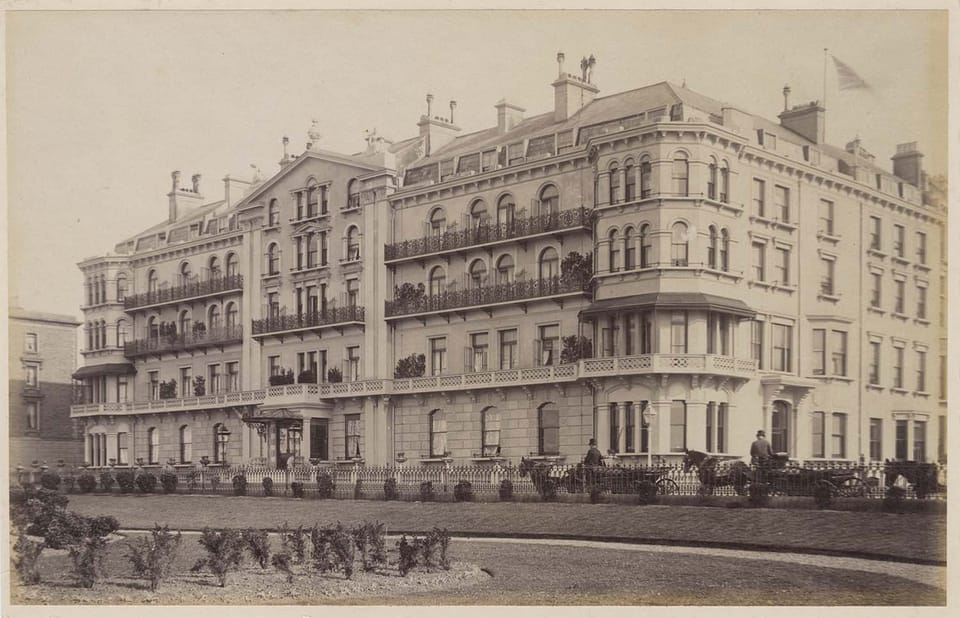Cliftonville: The Shoreline of the Mind

“On Margate Sands. I can connect / Nothing with nothing.” The lines, stark and sorrowful, sit at the heart of T. S. Eliot’s The Waste Land—a fractured modernist poem that helped redefine 20th-century literature. But their setting is real, tangible, and unexpectedly English: the windswept seafront of Cliftonville, Margate’s quiet eastern quarter. In 1921, Eliot, suffering from a mental breakdown and the collapse of his marriage, took refuge here, staying at the Albemarle Hotel and sitting each day in the open iron shelter that still stands above Nayland Rock. It was here, by the shifting tides of the North Sea, that a damaged man found language again.
Cliftonville has long been a place where language, architecture, and atmosphere meet—an enclave built deliberately to make space for breath, reflection, and imagination. First laid out in the 1860s as a genteel resort, its wide promenades, orderly crescents, and seafront gardens were conceived as a Victorian escape from the industrialised city. It was, in the words of John K. Walton, a place of “managed behaviour and visual clarity,” one of the many carefully planned retreats of Britain’s middle class.
It’s little wonder then, that Eliot is not the only poet to have passed through here. Nearly forty years later, John Betjeman would evoke Margate in a more comic, though no less affectionate, tone. His poem “Margate Pier” recalls an earlier England, a world of bathing machines, pierrots, and innocent flirtation. Betjeman, too, wrote from Cliftonville, staying in the same kinds of seafront hotels that today stand either subdivided into flats or awaiting uncertain futures.
There is something about Cliftonville’s architectural rhythm that invites literary reflection. The buildings themselves form a kind of paragraph structure: long Georgian terraces with neat punctuation, Italianate villas offering parenthetical calm, the Gothic punctuation of a spire or arch here and there. As recorded in Margate Architecture: A Short Guide by the Margate Civic Society, the area hosts a concentration of high-quality late Victorian housing stock. Many of these homes—especially around Dalby Square—are Grade II listed, their status a testament not just to style but to civic intention.
The conservation value of these structures is repeatedly underlined in official studies, such as Historic England’s Thanet’s Seaside Heritage and the Cliftonville Conservation Area Appraisal (2010). These documents speak not only of bricks and windows but of designed social purpose: buildings that shaped—and were shaped by—rituals of health, leisure, and modest ambition. Here, architecture was part of a moral vision. As SAVE Britain’s Heritage notes in its casework on coastal towns, “To preserve such places is not to retreat into the past, but to hold onto values made visible in space.”
Eliot’s retreat to Cliftonville was not his alone. Many writers, thinkers, and activists have followed the same path down the chalk cliffs, finding in the town’s mixture of grandeur and fadedness a kind of narrative permission. To walk its streets today—especially in winter, when the cafés are closed and the bandstand falls silent—is to inhabit a landscape of pause and possibility. What’s more, the pattern of its terraces and the framing of its sea views still echo the Victorian conviction that the arrangement of space might shape the mind.
Philip Hoare, in his essays on the cultural rebirth of Margate, writes eloquently of the coastline as a border of the psyche. “The sea,” he observes, “is a form of memory.” Cliftonville, then, is a page upon which memory and weather inscribe their fragile lines. That fragility is real: as Pevsner’s Architectural Guide to Kent makes clear, the area’s fabric is under threat—from neglect, overdevelopment, and the sheer cost of maintenance. The war years scarred the town, and though Roy Humphreys’ Thanet at War catalogues bomb damage in chilling detail, it is the post-war decades that inflicted slower harm: careless conversions, hollowed-out economies, and the gradual erosion of purpose.
Yet even here, hope writes itself anew. Heritage-led initiatives are gaining ground. Local conservation groups, retrofit pilots supported by Historic England, and community-led arts projects are returning the area’s buildings to civic life. These are not museum efforts—they are stories in motion, continuing what began when Victorian planners first laid out a district meant to nourish.
Today, in the low morning light, the Nayland Rock shelter still faces the sea. The tide comes in, and the tide goes out. The same waves that soothed Eliot continue their rhythm. And in Cliftonville’s quiet geometry of homes, a new generation of writers, artists, and residents ask: what does it mean to inherit a place like this? The answer, perhaps, lies in the meeting of word and wall, of ocean and stone.
This article is part of an ongoing series from ConserveConnect.News exploring Cliftonville’s literary, architectural, and civic heritage. We believe that heritage is a living language—spoken not only in policy, but in poetry, planning, and public life.